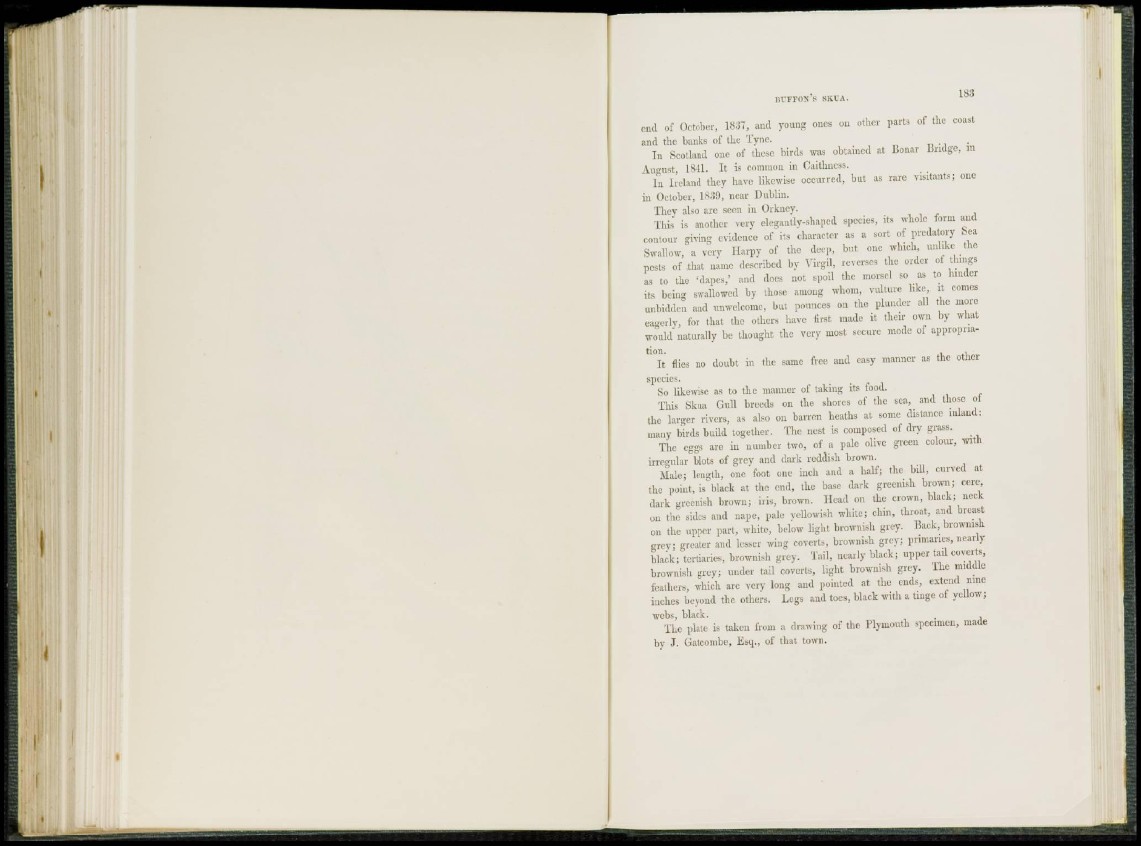
BUTTON'S SKUA. 183
end of October, 1837, and young ones on other parts of the coast
and the banks of the Tyne.
I n Scotland one of these birds was obtained at Bonar Bridge, in
August, 1841, It is common in Caithness.
I n Ireland they have likewise occurred, but as rare visitants; one
in October, 1839, near Dublin.
They also are seen in Orkney.
This is another very elegantly-shaped species, its whole form and
contour giving evidence of its character as a sort of predatory Sea
Swallow, a very 1 larpy of the deep, but one which, unlike the
pests of that name described by Virgil, reverses the order of things
as to the cdapes,' and does not spoil the morsel so as to hinder
its being swallowed by those among whom, vulture like, it comes
unbidden and unwelcome, but pounces on the plunder all the more
eagerly, for that the others have first made it their own by what
would naturally be thought the very most secure mode of appropriation.
I t flies no doubt in the same free and easy manner as the other
specie^.
So likewise as to the manner of taking its food.
This Skua Gull breeds on the shores of the sea, and those of
the larger rivers, as also on barren heaths at some distance inland:
many birds build together. The nest is composed of dry grass.
The eggs are in number two, of a pale olive green colour, with
irregular blots of grey and dark reddish brown.
Male; length, one foot one inch and a half; the bill, curved at
the point, is black at the end, the base dark greenish brown; cere,
dark greenish brown; iris, brown. Head on the crown, black; neck
on the sides and nape, pale yellowish white; chin, throat, and breast
on the upper part, white, below light brownish grey. Back, brownish
grey; greater and lesser wing coverts, brownish grey; primaries, nearly
black; tertiaries, brownish grey. Tail, nearly black; upper tail coverts,
brownish grey; under tail coverts, light brownish grey. The middle
feathers, which arc very long and pointed at the ends, extend nine
inches beyond the others. Legs and toes, black with a tinge of yellow;
webs, black.
The plate is taken from a drawing of the Plymouth specimen, made
by J. Gatcombe, Esq., of that town.